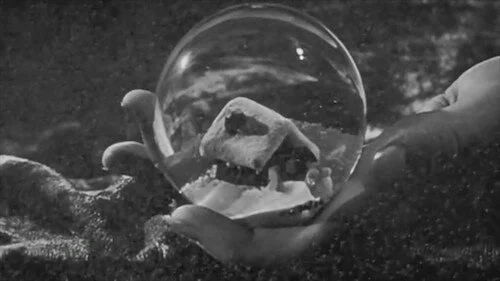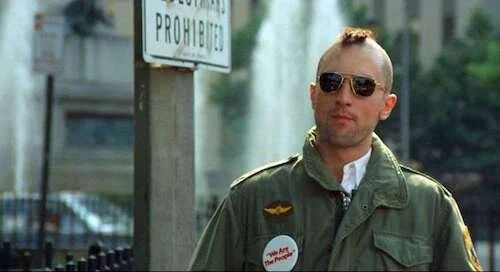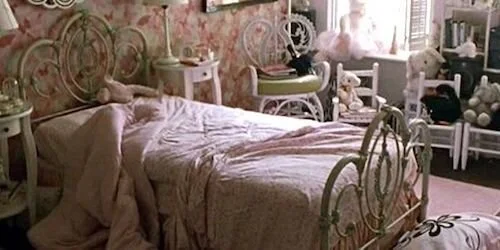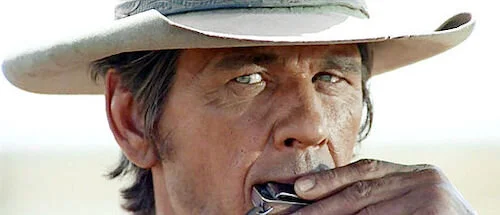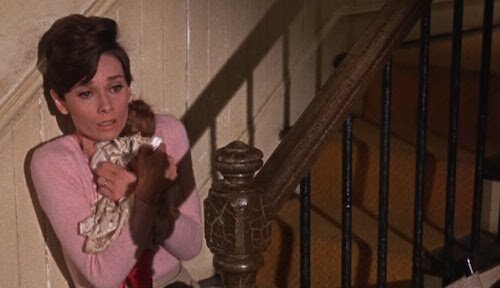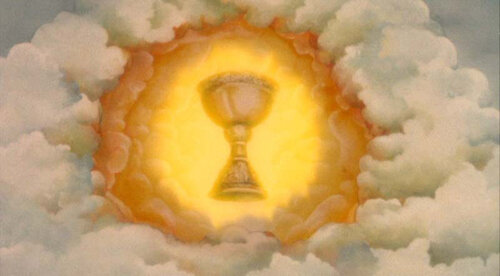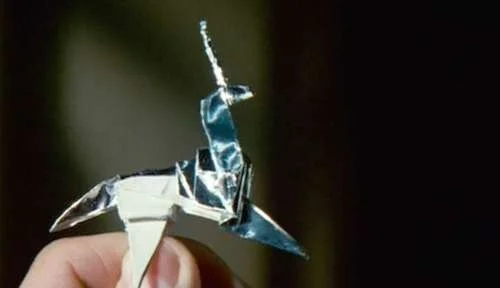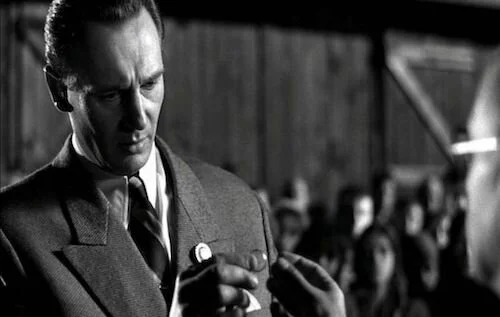Screenwriting Tips: Items in Films
When it comes to screenwriting, new authors will leap right into thinking of characters, time periods, locations, and other story elements. What should be a part of this equation is the relationship characters and/or places can have with objects, since they too can tell their own story. To get you familiar with the power objects in a film can have to a scene, a character, a plot line, or an entire film, here are five great ways items can be incorporated into a story, with some examples.
Note: Considering the discussion of storylines in certain films, there may be slight or definite spoilers for each of the films brought up. Reader discretion is advised.
Character Trait
When a character takes hold of an object, you can learn something about them. A professor’s worn down computer will tell you that the person is a hard worker, but also relies on their favourite equipment to get the job done. A pristine car that a character drives can establish wealth, or show care for one’s belongings. Any item that can reveal a bit of a character (or enhance their universe around them) is beneficial. These can be brief cases to detail a scene, or important items that can be shown for an entire film (Raoul Duke’s yellow tinted glasses to help with his insomnia, for instance).
Citizen Kane
One of the most iconic examples is in Citizen Kane, and it remains a major twist in the story. Once we discover right at the tail end of the feature what “Rosebud” actually is, we learn something about Charles Foster Kane. We learn about a man that clung onto his childhood — a time before he became corrupted — for his entire life, and now expressed regrets on his death bed. A simple object changed the course of the entire film, because of the brief interaction between Kane and this object we see early on in the feature, and the revelation right at the end.
Taxi Driver
In Taxi Driver, we see Travis Bickle’s devotion to his time in the Vietnam War, considering his constant wearing of his military jacket. This same jacket eventually gets branded with a Charles Palantine campaign button, which changes meaning throughout the course of the film (from being his connection to being with Betsy, to representing his primary target). The button ends up channelling Bickle’s unstable state of mind, considering his motives and the contrasting nature of him wearing the button.
Personal Growth
Sometimes items can represent how much a character has developed (or regressed) in a film. This can be done by showing the item(s) multiple times, with different responses from the same character at some points in the film. This shows differing mindsets, likely caused by other plot threads. A flask that was used in every scene is now developing cobwebs in the corner of the lead’s room, showing that a character has stopped drinking for a long period of time. A memento that was clung onto is now tossed aside as the harbinger of bad luck. An abandoned toy is now sought after, since the character misses it. You can create many different contrasting sides to an item through a transformed character.
Black Swan
In Black Swan, Nina Sayers is youthful with her collection of stuffed animals (note the not so subtle black swan plush toy). These same toys begin to look invasive during Sayers’ more vulnerable moments. Eventually, once Sayers has tried to become her own person that’s not controlled by anyone, she abruptly picks up her collection of plushies and tosses them down the garbage chute. She no longer wants to be seen as a naive girl who can’t take care of herself. The black swan toy also gets abandoned, and can be interpreted as its own symbol; she is fed up with that aspect of her role.
Parasite
In Parasite, Kim Ki-woo is gifted a rock that is meant to bring good luck and fortune to anyone that is in possession of it. At first, he thanks the rock for the good luck he and his family have been granted. When their fates take a sharp turn downwards and they are no longer succeeding, he clings onto the rock, hoping it will work its magic again. He ultimate decides the rock has no ability to help them, so he tosses it aside in a river, so it can camouflage with the other rocks there. It’s worth noting that this same rock is used to attack Kim, so, ironically, it represents his own personal downfall as well.
Connection to Another Character
If an object is given (or stolen) by (or from) somebody else, it will carry a significance for the holder of said item. If a mother gave her daughter a pendant for graduation, it’s a sign of congratulations that the daughter may hold onto for the remainder of the film. If a wedding ring is being worn in a film about divorce, you are reminded that this couple once loved each other when they swapped rings and presented vows. This establishes a bond — either positive or negative — between two characters, that can be observed for the remainder of a feature.
Once Upon a Time in the West
In Once Upon a Time in the West, the character with no name is nicknamed “Harmonica” because he carries one around at all times. All we know for most of the film is that he can play it, and often carries the same melody each instance. Eventually, we see that it was Frank’s harmonica that he shoved into “Harmonica’s” mouth while he was forced to bear witness to the hanging of his brother. Meant to be the instrument he used to “keep his brother happy” as he died, “Harmonica” now carries the instrument as a reminder of why he is hunting Frank down.
Wait Until Dark
In Wait Until Dark, the doll stuffed with drugs is passed around, until it winds up in Susy Hendrix’s possession. The doll represents danger wherever it is, because of the thugs it’s related to, and the harm that follows it (as the criminals look for it). Once Hendrix finds it, she now knows that she has a target on her back that she thought was previously a mistaken accusation. The object shifts from being the representation of why the criminals are bugging her, to being a definitive image of danger that she is now in. Coincidentally, Hendrix can hold it during her fearful moments, as it ironically provides her temporary solace (being a doll and all).
The Goal of the Story
Sometimes, an item can represent the entire mission of a character. Is there treasure buried at the bottom of the sea? Does a birth certificate need to be found as proof? Does the One Ring need to be destroyed? Because of other significance, the item can take up the entire narrative as the main reason why this story (or plot thread) exists.
Pulp Fiction
In Pulp Fiction, we learn about Butch Coolidge’s relationship with his watch, because it was handed down via multiple generations in his family; Captain Koons details how he and Coolidge’s family held onto this heirloom as prisoners of war. In the chapter appropriately titled “The Gold Watch”, Coolidge’s girlfriend Fabienne forgot the watch at their place that they are abandoning. Because of the significance of the watch to Coolidge, it now becomes the main purpose of this chapter: he must rescue it, just like others in his family did before him.
Monty Python and the Holy Grail
In Monty Python and the Holy Grail, we obviously know that King Arthur and his troupe of knights are on a quest to seek, well, the Holy Grail (since King Arthur was commanded by God to find it). For each of the knights, there is a slightly different reason for their mission, whether it be fame, wealth, power, or the like.
A Revelation
Finally, an item can mark the revelation and/or realization a character has. This can set the tone of the story (a detective finding cigarette ashes in his apartment, and he has never smoked a day in his life, so someone else must have been in there), to progress a story (someone finding a tracking device in their car, and figuring out they have been tailed this entire time), or to wrap a tale up (a legal document is found, absolving someone of a dispute). When cleverly used, these items can dominate an entire scene and/or film, even if they are briefly used.
Blade Runner
In Blade Runner, Rick Deckard often has dreams of unicorns, although he keeps these dreams to himself. As he hunts replicants, he eventually finds himself in a stand still towards the end of the film. Officer Gaff presents him with an origami construction of a unicorn. This poses an ambiguous question: is Deckard himself a replicant who has had his dreams and memories implanted into his head? How could Gaff know about his dreams? Considering it’s a possibility Deckard never considered before, it becomes a question of his own reality to end the film on.
Schindler’s List
In Schindler’s List, Oskar Schindler is gifted with a gold ring by some of the Jews he protected during the Holocaust. It’s at this moment that he realizes that there are so many other lives that could have been saved, had he not been so selfish earlier on. He sees the value in the gold, and how he could sell this (and other objects of his own) to recruit more Jewish employees to save more from death and torture. He breaks down, since it is too late now. An object meant to honour Schindler for saving lives has become his totem of regret, since he was so greedy before and felt he didn’t do enough to help.
Andreas Babiolakis has a Masters degree in Film and Photography Preservation and Collections Management from Ryerson University, as well as a Bachelors degree in Cinema Studies from York University. His favourite times of year are the Criterion Collection flash sales and the annual Toronto International Film Festival.


